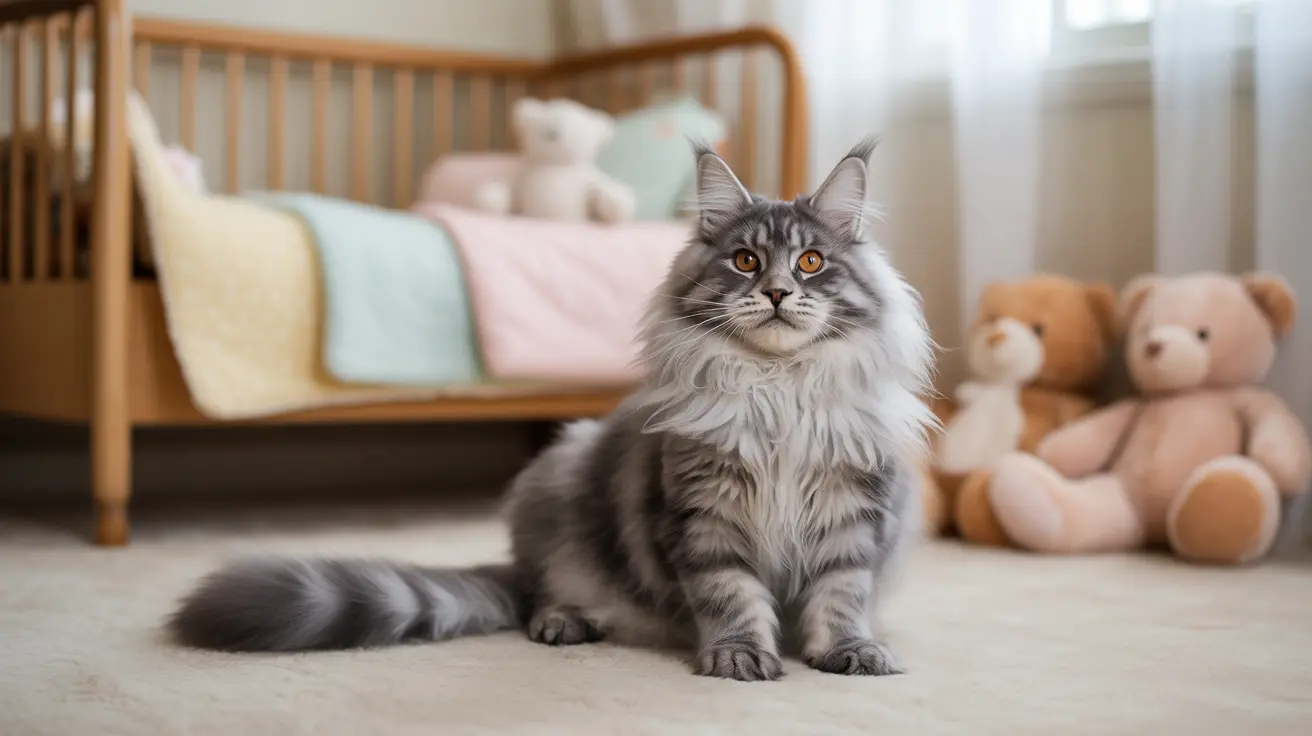Understanding Cat Allergies in Newborns
Cat allergies in newborns are uncommon but possible. The allergic reaction isn't triggered by cat fur itself, but rather by specific proteins found in cat dander, saliva, and urine. These proteins, particularly Fel d 1 and Fel d 4, are microscopic particles that can become airborne and settle throughout your home.
Most babies who develop cat allergies show their first symptoms after repeated exposure, typically beyond their first birthday. However, some infants may display early sensitivity signs, especially if they have a family history of allergies.
Recognizing Allergy Symptoms in Babies
Identifying cat allergies in infants can be challenging because symptoms often mirror common childhood ailments. Key signs to watch for include:
- Persistent sneezing and runny nose
- Watery or itchy eyes
- Wheezing or difficulty breathing
- Coughing, especially at night
- Skin reactions like hives or eczema
- Unusually persistent congestion
Diagnosis and Testing
If you suspect your baby has a cat allergy, consulting with a pediatrician or allergist is essential. While allergy testing can be performed as early as six months of age, results are generally more reliable in older infants and toddlers.
Doctors typically use two main testing methods:
- Skin prick tests (usually performed after 6 months of age)
- Blood tests to measure specific antibodies (IgE levels)
Managing Cat Allergies in Infants
If your baby shows signs of cat allergies, several management strategies can help:
- Keep cats out of the baby's bedroom
- Use HEPA air purifiers in main living areas
- Clean frequently with a HEPA-equipped vacuum
- Wash bedding regularly in hot water
- Consider removing carpets in favor of hardwood floors
- Create "cat-free zones" in your home
Prevention Strategies
While you can't completely prevent cat allergies, you can reduce exposure risk:
- Regular grooming of your cat (preferably outside)
- Frequent hand washing after handling cats
- Using allergen-reducing products on your cat
- Maintaining good ventilation in your home
- Regular professional cleaning of upholstery and carpets
Frequently Asked Questions
Can newborn babies be allergic to cats, or do cat allergies usually develop later?
While it's possible for newborns to be allergic to cats, it's relatively rare. Most cat allergies develop after the first year of life, following repeated exposure to cat allergens.
What are the common signs that my baby might be allergic to cats?
Common signs include sneezing, runny nose, watery eyes, coughing, wheezing, and skin reactions like hives or eczema. These symptoms typically appear shortly after exposure to cats.
How do cat proteins trigger allergic reactions in infants if it's not the cat fur itself?
Allergic reactions are triggered by proteins found in cat dander, saliva, and urine. These proteins become airborne and can stick to surfaces throughout your home, including cat fur, which acts as a carrier.
What steps can I take to reduce my baby's exposure to cat allergens at home?
Key steps include keeping cats out of the baby's room, using HEPA air purifiers, frequent cleaning, washing bedding regularly, and maintaining good ventilation. Regular cat grooming and creating cat-free zones can also help.
When and how should I get my child tested for a cat allergy?
Allergy testing can be performed after six months of age, but results are more reliable in older infants. Consult with your pediatrician or allergist if you suspect an allergy, and they can recommend appropriate testing methods based on your child's age and symptoms.
Conclusion
While newborn cat allergies are possible, they're not common in the first year of life. If you're concerned about your baby's reaction to cats, monitor their symptoms carefully and consult with healthcare professionals for proper diagnosis and management strategies. With proper precautions and management, many families can successfully navigate having both babies and cats in their homes.






